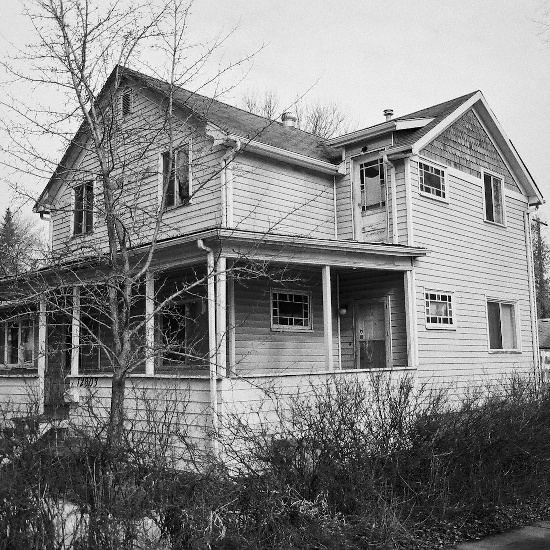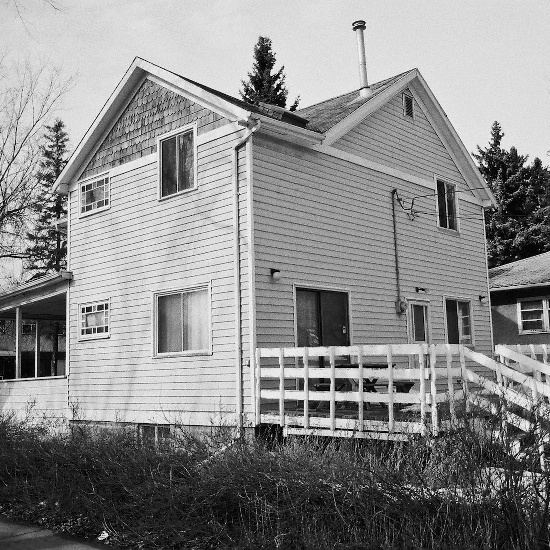Dr. Cameron Residence
Dr. Allan Barton Cameron ran his practice from this residence, one of the earliest homes remaining in Calder.
Dr. Allan Barton Cameron ran his practice from this residence, one of the earliest homes remaining in Calder.
This home was built by Jonathan Davidson, a member of West Edmonton's first Village Council and first school board. He built this home and a number of other West Edmonton homes in 1913 at a time when the village was rapidly coming into being as a result of its proximity of the new Grand Trunk Pacific Railway terminus immediately to the south. It is an Edwardian vernacular home with Queen Anne details. The Edwardian features include the gabled front, full second-storey, and asymmetrically placed front facing side entrance. The details that are borrowed from the Queen Anne style of architecture include its L-shape and medium-pitched gabled roofline, decorative bargeboard finishing the gable ends and decorative cedar shingles highlighting each gable peak. The wrap-around porch enclosed with a wooden balustrade and decorative coloured and textured glass piano windows and doors also speak to the QUeen Anne influences. Originally clad with cedar shingles, the home was refinished with vinyl siding between the 1980s and 2010s, leaving exposed shingle siding on the north gable peak.
Davidson owned this home until selling it to Dr. Cameron in 1916, a year before West Edmotnon was amalgamated into the city and renamed the community of Calder. The separate side entrance to the home provided private access to the doctor's office from which Dr. Cameron practiced as a general physician for 40 years until his retirement in 1956. (The original main entrance in the centre of the front facade has since been removed, leaving only the side entrance.) Dr. Cameron was a staff member of the Royal Alexandra Hospital in its original location in Boyle Street and was the medical officer for the west division of the Canadian Northern Railway. He was known to flag down trains on the Calder tracks heading into Edmonton when he needed to get to the hospital, and even made house calls as far away as Athabasca when needed. A pioneer doctor in a working-class community, Dr. Cameron sometimes accepted eggs or produce from patients who could not afford to pay. His wife, Nora, sold the house when Dr. Cameron passed away in 1963.
Details
Type
Residential
Designation Status
No Historic Recognition
Neighbourhood
Time Period
Year Built
c. 1913
Architects
Architectural Styles
Character Defining Elements
Veranda , Decorative shingles , Gable dormer , Intersecting gable roof , Two storeys , Nailed frame structure , L shape footprint


